College 100 – A Name on the Wind
William & Mary’s class of 2019 is the first to embark upon the new College Curriculum. The new curriculum requires all students to complete a COLL 100 course during their first year at W&M. COLL 100 courses are 4-credit classes that are about big questions and big ideas — the significant concepts, beliefs and creative visions, theories and discoveries that have shaped our understanding of the world*. The course is intended to be a wide-reaching introduction to both the rigor and excitement of William & Mary’s academic program.
I’m teaching Weather, Climate, & Change as a COLL 100 course, and on the first day of class I looked out on eager group of 40 fresh people. It took about a week, but I now know everybody by name – so nobody’s safe from being called upon! Yes, it is a science class and quantitative problem sets are part of the fun, but we’ll also touch on many topics as wide ranging as Joseph Conrad’s seafaring prose and Neko Case’s haunting song lyrics.
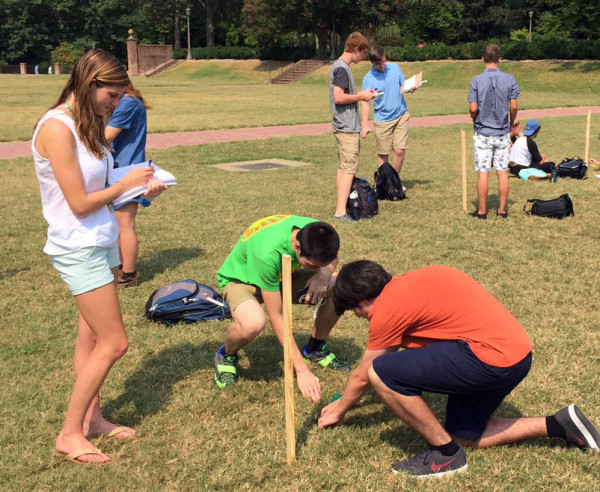
Weather, Climate, & Change students measuring the solar elevation angle in the Sunken Garden, note the old school approach using a stick, a shadow, a ruler, and trigonometry.
Weather and climate are global phenomena, thus an understanding of world geography is prerequisite. We make good use of Google Earth as an interactive map, and as a research and presentation tool. As you can see from the Google Earth map below, students in the Weather, Climate, & Change course hail from a large swath of the northern hemisphere. Nearly all of us reside in the temperate latitudes, and thus our weather (and consequently climate) is strongly influenced by the Westerlies, a regional wind pattern set up by global atmospheric circulation.
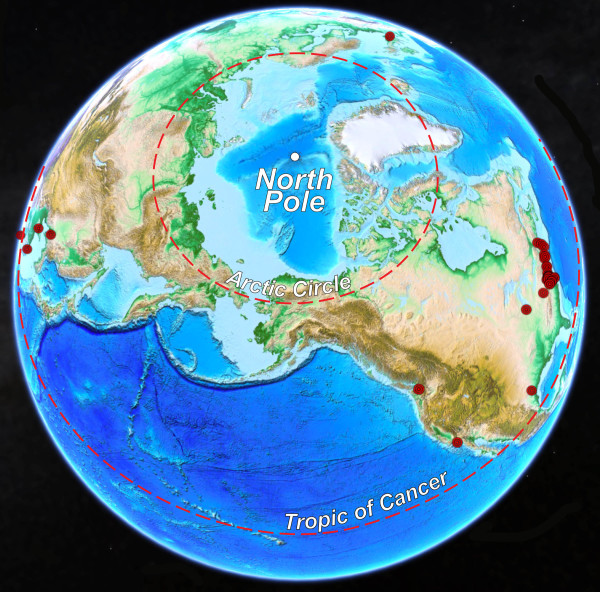
Google Earth image illustrating the home location (red dots) of students enrolled in the Weather, Climate, & Change course. We mostly hail from the temperate latitudes.
In addition to the globe-encircling Westerlies and the Trade Winds we’ll discuss many regional and local winds that occur throughout the world. One of my favorites is the Sirocco, it’s a regional wind in North Africa and the Mediterranean that blows from the south, bringing hot air and dust from the deserts of North Africa into southern Europe. The Sirocco develops ahead of, and to the east of, mid-latitude low-pressure systems and their associated frontal boundary. Dante, in his Divine Comedy, posits that the Sirocco is unleashed when Eolus, king of the winds, lets it out of his cave. The Sirocco can make the Italian sky brick red, and the dust it brings is a respiratory hazard for many.
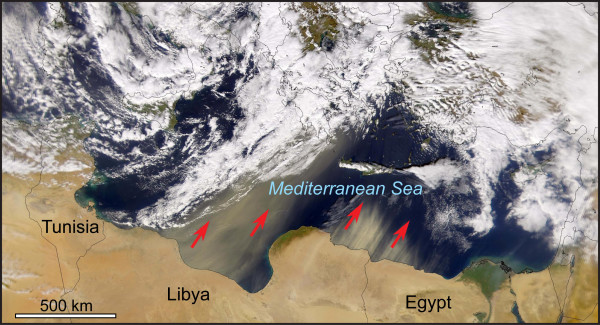
The Sirocco at work. NASA imagery from the SeaWiFS Project, 5 February 2003. (http://oceancolor.gsfc.nasa.gov/FEATURE/IMAGES/S2003036110156.L1A_HROM.SaharaDust.jpg)
Students randomly picked a named wind, and then set to work researching that particular wind. The wind names alone can be quite evocative – Australia’s Brickfielder, Chile’s Puelche, South Africa’s Cape Doctor, and the Loo of southern India, to name just a few. I asked students to track down three to five sources about their particular wind, and deliver a short presentation in small groups to inform their colleagues about their wind – what it is, how it develops, and its impact on local culture and society.
COLL 100 courses are an innovative part of the new Arts & Sciences curriculum. One of the stated goals for COLL 100 includes developing student’s abilities to present and defend what they’ve learned by communicating beyond the written word with visual, oral, digital, and other creative media*. In the Geology Department we’ve long emphasized the value of effective communication to our majors, so the communication aspect of COLL 100 aligns neatly with our educational values. In their time at William & Mary, Geology majors learn to become savvy presenters, whether it’s delivering lessons to elementary school students or research talks at professional conferences.
The Weather, Climate, and Change class meets four times per week, and this fourth class hour is proving critical, not only for actually getting us outside to observe and measure the atmosphere, but also providing ample time for discussion and presentations. For me an extra class hour is essential for accomplishing the course goals.
Curiously, twenty-eight, out of the thirty-two, COLL 100 courses being offered this semester meet for just three hours per week, yet are still worth 4-credits. How can this be? How can these courses actually meet the lofty expectations set for COLL 100 in just three class hours per week?
4-credit courses should meet for four class hours, anything less is shortsighted and disingenuous. Especially as that extra class hour provides scheduled time for presentations, discussions, learning about new technology, and group work. If W&M is serious about producing an exceptional new curriculum then we need to collectively stand and deliver.
The Weather, Climate, & Change students have completed their first presentation of the semester, and they’ll build upon this effort as we learn more about the science of weather and climate. As the fall semester rolls on, students will film their own weather video, then curate and present that to the class, they’ll tackle a dendrochronology research project, and in small groups investigate the details of weather, climate, and changing climate at a distant locale. There is much to do. Check back to see our progress as the new COLL adventure unfurls.
* denotes text from the College Curriculum webpage
Comments are currently closed. Comments are closed on all posts older than one year, and for those in our archive.

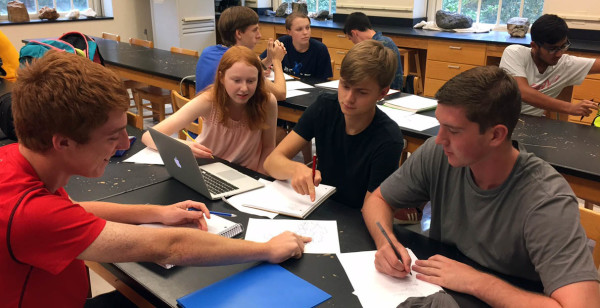
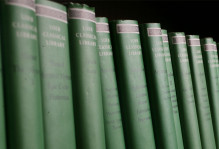
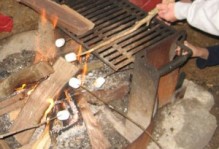
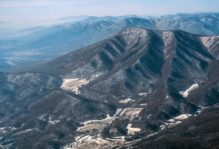
Well, this is an interesting look at the new system.
Looks like fun!
Looks like a fun and interesting intro course! Also a good subject choice for what it sounds like COL100 is supposed to be all about.